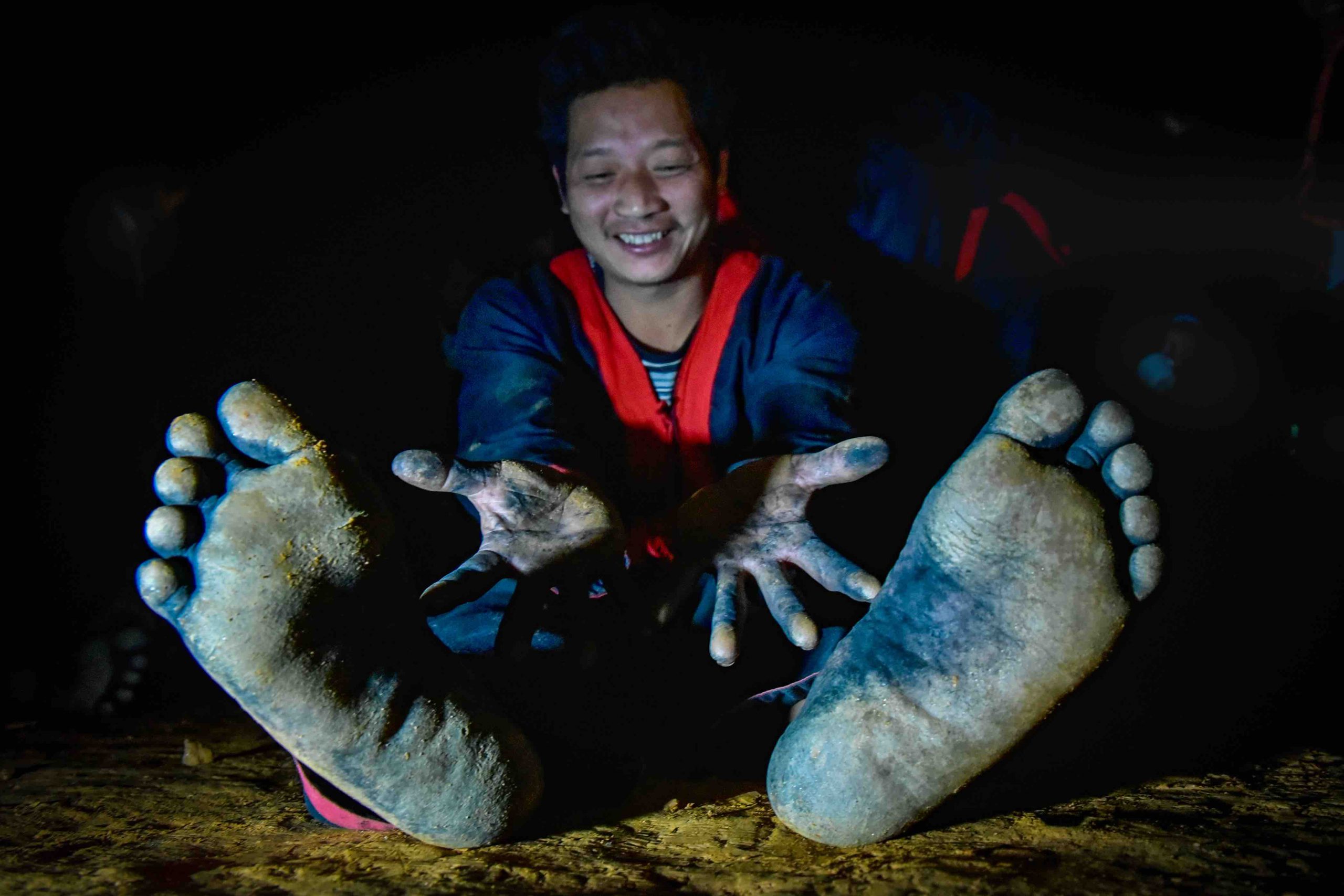Story: Xuan Thu
Photos: Manh Cuong
The Pa Then people trace their Fire Dancing Festival to a legend of a saint who descended from the heavens to help villagers defeat evil forces. To honor this saint, they hold the festival to cleanse their souls, ward off evil, and pray for good fortune.

The Pa Then practice animism, believing all things have spirits and souls. Deities of the forest, mountains, rivers, and fire govern various realms, with the fire deity being the most sacred. This supreme figure is believed to protect the community, offering strength and luck. The Fire Dancing Festival, held between the year’s end and the start of the new year after the harvest, allows the Pa Then to give thanks to heaven, earth, the gods, and ancestors for a year of abundance, peace, and good fortune.
The festival aligns with the vibrant season when spring flowers bloom in Vietnam’s northern mountainous provinces. Traveling from Tuyen Quang city to Lam Binh district, I was captivated by the blooming peach blossoms, particularly at the bend of Khau Lac Pass. True to its name, which locals say means “swaying” due to its winding path, the pass offers stunning views of mountains on one side and flowers on the other.
Upon arriving at Lang Can commune in the heart of Lam Binh district, specifically in Ban Khien and Nam Dip hamlets, I was struck by the festival’s unique setup. The stage was crafted entirely from bamboo, with poles forming the supports, railings, and flooring. It also featured traditional irrigation tools, used by the Tay and Nung people to channel water to higher rice fields, and two wooden boats for river crossing.

Decorations included palm leaves, traditional weaving frames, and classic Hmong musical instruments like the Khen and Con balls made from cotton and seeds. These items were beautifully displayed for the Long tong Festival, which translates as “going down to the fields”. Large swathes of intricate and colorful traditional textiles made by Tay, Dao, Hmong, and Pa Then people were also showcased. The stage was further enhanced by its backdrop of white limestone walls and natural stalactites, forming a stunning natural bas-relief, all surrounded by pristine forest. I quietly admired the community’s dedication to preserving and maintaining the local ecology. At the center of the stage is the entrance to Tham Pau Cave, nestled within Tham Pau Mountain. Locals recount a legend of a compassionate fairy who taught the people to cultivate cotton and weave. Inside the cave, remnants of a traditional loom remain. I stood in quiet reflection, taking in these traces of the past, the natural bas-reliefs, the untouched forest, and the convergence of cultural traditions.
The crowd gathered for the Fire Dancing Festival grew larger. Young Pa Then men joined the vibrant fire dance, filling the air with energy and power. The bonfire, as large as a house, was built from long logs, the flames crackling as they blazed. The young men leapt into the fire, their daring jumps met with cheers from the crowd. My heart raced each time they plunged into the flames and somersaulted out like magicians. Nearby, the shaman tirelessly struck the “pan do”—a ritual object believed to connect with the fire deity.

After the festival, I approached the fire dancers, curious and concerned about any burns or injuries. To my amazement and admiration, they were completely unscathed, with not a single hair singed. I sighed in relief, filled with wonder! According to the dancers, this was the only time of the year they could directly communicate with the sacred and supreme fire deity, deeply revered by the Pa Then.
I consider this festival a significant cultural event, deeply rooted in Vietnam’s mountainous heritage. As someone passionate about researching ethnic attire, I’ve been inspired by the Pa Then’s Fire Dancing Festival to create a collection. Their miraculous fire has sparked my determination to overcome challenges and pursue my passions, hoping it will bring good fortune.
Blending folk culture with performance art, the Fire Dancing Festival stirs a range of emotions. At its core, it embodies deep aspirations for success and good fortune as spring approaches.










